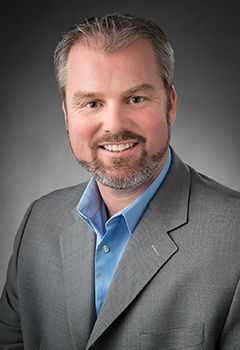Supervisor Gore was kind enough to share his priorities for the coming legislative year. We’ve split his thoughts into two parts, check back next week for part two.
Becoming an energy resilient community
The new reality of power shutdowns reminded us all that human-caused disasters can influence us as much as natural disasters. The significant loss of business revenue from the power shutdowns and the Kincade Fire itself rippled throughout the North Bay region and showed once again the need to hold our utility PG&E to account and continue our efforts to partner around becoming an energy resilient community.
While I am not a natural antagonist, I find myself in a position of spending far too much time fighting for accountability with our utility and insurance companies, caught in the mix of holding these institutions to account and also partnering with them at the same time.
I support power shutdowns to mitigate wildfire risk; however, the “how” of this conversation and operation is far more important than the “what.”We need only look to our neighbors in San Diego to see how a utility — in this case San Diego Gas and Electric — can effectively implement the required operational and infrastructure improvements to run a de-energization program as a scalpel instead of a mallet.
The combination of PG&E’s power shutoffs, its bankruptcy and financial liability and operational morass means that becoming a fire resilient community, and having more authority over the management of our grid, is absolutely imperative. I will champion this effort in my position as Sonoma County Supervisor and as an elected officer with the California State Association of Counties.
Fire and emergency services
The Kincade Fire showed us yet again that we must continue our fight to transition #SonomaStrong into #SonomaReady and #SonomaResilient.
The preparation and response to the Kincade Fire from the county, law enforcement, first responders, firefighters and the community at large was downright inspiring.
Two years ago we got smacked in the face by the October 2017 fire siege, but this time we were ready. We had established a network of fire cameras that allowed us to maintain situational awareness at night. Funds had been allocated by the Board of Supervisors and the state to up-staff fire departments during red flag warnings. Our Emergency Operations Center was awake and humming with activity long before the fire began.
The alerts and warnings, the evacuations and shelters, while not perfect, succeeded in creating the right conditions for our firefighting crews to defend our population centers. Without a doubt, these cumulative efforts saved thousands of homes from burning in Windsor, Healdsburg and northern Sonoma County.
In spite of all these gains and improvements we must remember that the true grunt work of resilience still confronts us. In addition to this systems-based preparedness and response, we need to double down on the institutional demands of resiliency. In this case that means fuel reduction and management, home hardening and defensible space. As the former chair of the National Association of Counties and California State Association of Counties resiliency platforms, and a believer that this is the movement of our day, I will continue to advance those efforts locally, statewide and nationally, and I ask you for your help.
As much as we focus on solutions driven by government, business, nonprofit and civic groups, we must embrace the difficult, incremental work that can only come from citizens rising up and taking care of their own families and properties.
To empower this rise, we must continue to support the development of citizen preparedness organizing, training and funding. In my own district, we created a dynamic block captain network of fire survivors after our 2017 disaster. As inspiring as it was to organize people around recovery, we immediately realized that we had to do the same for resiliency and preparedness.
That realization led to a partnership between my office and our fire departments to deploy COPE teams (Citizens Organized to Prepare for Emergencies) throughout Northern Sonoma County. This simple, organized approach led to the creation of 14 COPE teams in just one area. This is a great start. We need more.
Next week: Disruption in insurance markets
53.9
F
Healdsburg
April 19, 2025








